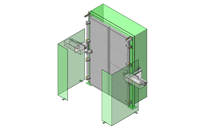(!) Since support from Microsoft will end on January 14th, 2020, Windows 7 will be excluded from the recommended environment from December 15th, 2019 on this site. Vì lý do Microsoft kết thúc hỗ trợ cho Windows 7 vào ngày 14/01/2020, Windows 7 sẽ là hệ điều hành không được khuyến khích sử dụng với trang web này từ ngày 15/12/2019.
Search by Category / Brand Tìm theo danh mục, nhãn hiệu
Search by Category Tìm theo danh mục
- [Thông báo] Cập nhật địa chỉ kho tập kết hàng hóa tại khu vực miền Nam của MISUMI Việt Nam. Xem chi tiết.
[Announcement] Update on warehouse address in the Southern region of MISUIMI Vietnam. See more. - [Cảnh Báo] Thủ Đoạn Lừa Đảo Từ Nhân Viên Giao Hàng – Yêu Cầu Trả Phí Ship. Xem chi tiết.
[Warning] Fraud Calling from Shipper - Asking to Pay Shipping Fee. See more.
AUTONICS Rotary Encoders
Rotary Encoders products in the Automation Components category from AUTONICS. The product can be selected based specifications. AUTONICS offers products around 0 items and the product specifications can easily be compared. Search and select detailed specifications of parts for your machine with free CAD download. AUTONICS products are available to order through MISUMI online 24/7. Free shipping, no minimum order.
Brand |
|
|---|---|
| CAD |
|
| Days to Ship |
|
Product not found.Sản phẩm không có.
Loading...Tải…
Application example related to this categoryVí dụ ứng dụng liên quan đến danh mục này
Related Categories to Rotary EncodersDanh mục liên quan đến Rotary Encoders
FAQ Rotary Encoders
- Question: What is a rotary encoder and how does it work?
- Answer: A rotary encoder is a device that converts the rotation of a shaft into an electrical signal. There are two main types: incremental and absolute. Incremental encoders generate pulses as the shaft turns, aiding in tracking movement and direction. Absolute encoders assign a unique code to each shaft position, often in binary or gray code. These codes, located on a disk, enable instant identification of the exact position. Rotary encoders are vital in applications like robotics and industrial systems, providing precise position sensing for tasks requiring accuracy in rotation measurement.
- Question: What are the two main types of rotary encoders and their differences?
- Answer: There are two main types of rotary encoders: incremental and absolute.
- Incremental encoders generate pulses as the shaft turns, showing the incremented movement but not indicating the exact position. They're simpler and have lower resolution. The rotation direction is known from the pulse order.
- Absolute encoders give a unique code for each shaft position, instantly revealing the exact location. They have higher resolution and don't need a starting point to reference.
In short, incremental encoders track movement changes, while absolute encoders tell the exact position. Incremental is simpler, while absolute is more precise and knows the position instantly. - Question: How do rotary encoders differ from potentiometers and why might one be preferred over the other?
- Answer: Rotary encoders and potentiometers differ in their output and operation. Rotary encoders provide digital signals, offering high precision and durability with no physical contact. Potentiometers, on the other hand, offer analog output, producing a continuous range of values. Rotary encoders are preferred for applications requiring precise digital position information, like robotics. Potentiometers are suitable for simpler applications, providing analog signals at a lower cost. The choice depends on the need for digital precision or analog continuity, durability, and cost considerations in various electronic systems.
- Question: What applications can rotary encoders be used for, particularly in terms of measurement and control?
- Answer: Rotary encoders are integral in precise measurement and control across various fields. They're crucial in industrial automation for controlling robotic movements and conveyor systems. CNC machines rely on them for accurate tool positioning. In electronics, rotary encoders facilitate control interfaces like volume knobs. They find applications in medical equipment, aviation, and automotive systems for precise position sensing. Additionally, they play vital roles in renewable energy systems, printing machinery, and telecommunications, ensuring accurate measurement and control for enhanced operational efficiency in a broad spectrum of industries.
- Question: How do I select the appropriate rotary encoder for a specific application?
- Answer: To select the right rotary encoder, first, determine the required type of encoding (absolute or incremental) based on precision needs. Consider the encoder's resolution for accurate measurements. Evaluate environmental factors, ensuring compatibility with temperature and exposure conditions. Check the mechanical design for fitting constraints. Confirm electrical requirements like voltage and output type. Assess durability and lifespan, and finally, balance these factors within your budget to choose an encoder that meets the specific needs of your application effectively.
- Question: What are the advantages and limitations of using rotary encoders?
- Answer: Advantages: Rotary encoders provide high precision, making them ideal for accurate position measurement in various industries. Their versatility suits applications in automation, robotics, and aerospace. The solid-state construction ensures durability by minimizing wear and tear. Incremental encoders offer digital signals for straightforward integration, while absolute encoders provide instant and accurate position feedback.
Limitations: However, rotary encoders can be relatively costly, especially for high-resolution models. Some may have complex setups and be sensitive to harsh environmental conditions, impacting performance. Mechanical wear, particularly in incremental encoders, and potential higher power consumption are additional considerations. - Question: What accessories are required for the optimal operation of Rotary Encoders?
- Answer: For optimal rotary encoder performance, essential accessories include mounting hardware (brackets, couplings), shielded cables for noise reduction, secure connectors, a stable power supply, and protective housings against environmental factors. Signal processing devices may be necessary for effective data interpretation. Couplings and adapters ensure proper torque transmission, while damping systems enhance stability in vibrating environments. Additional accessories like shaft seals, covers, and heaters or coolers may be needed based on specific application requirements and environmental conditions for prolonged and reliable operation.











How can we improve?
How can we improve?
While we are not able to respond directly to comments submitted in this form, the information will be reviewed for future improvement.
Customer Privacy Policy
Thank you for your cooperation.
While we are not able to respond directly to comments submitted in this form, the information will be reviewed for future improvement.
Please use the inquiry form.
Customer Privacy Policy